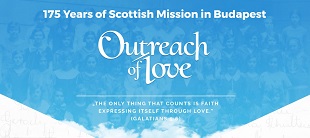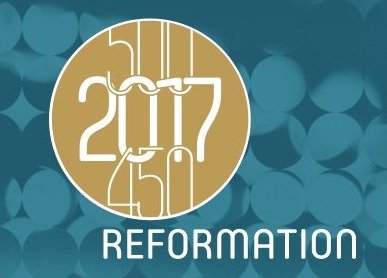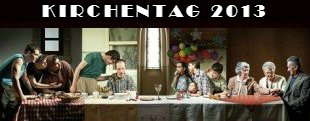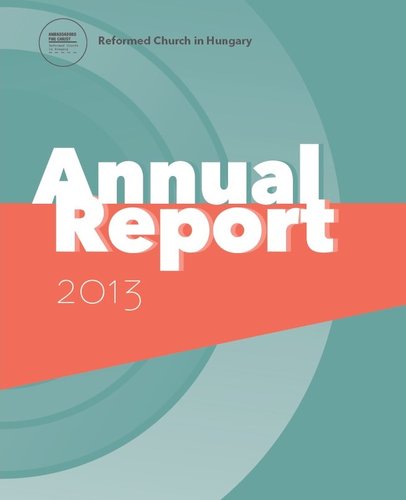Jubilee of the Reformers and the Reformation
2014. február 18., keddThe tradition of celebrating the renewal of faith that occured in the age of reformation goes back centuries. The intellectual heritage of the reformers is remembered in both the Carpathian Basin and in Western Europe alike.
The first jubilee celebrating the events of the reformation was the 50th jubilee of accepting the Augsburg Confessions, which lay down the dogmatic basis of the Lutheran Church.
According to the Mosaic laws, people of the Old Testament held a day of joy on every 50th year in which they could experience the liberating grace of God and his love. “Consecrate the fiftieth year and proclaim liberty throughout the land to all its inhabitants. It shall be a jubilee for you; each of you is to return to your family property and to your own clan” (Leviticus 25:10). The reformation gave an opportunity to hear the word of God, return to the Bible and experience a renewal of faith.
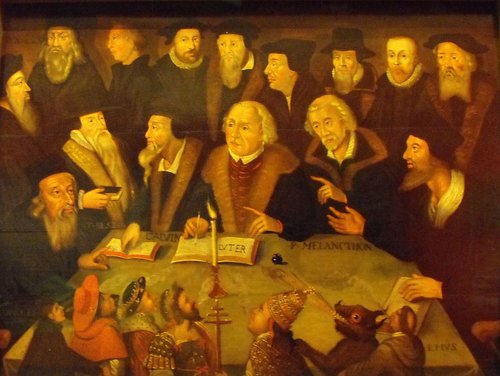
In addition to the commemoration of the reformation, Protestant churches considered establishing the dogmatic bases the same importance. On the first jubilee, the Augsburg Confessions, put into words by Philipp Melanchton, was republished and delivered on the 25June 1580.
Centennial celebrations
The idea of celebrating the centenary of the reformation first appeared at the birthplace of Martin Luther in Saxony. The prince elector of Saxony, John George, ordered his principality, in his letter written on the 12th of August 1617, to celebrate this jubilee and advised the foreign brothers to do likewise.
In this letter, the prince elector wrote about Martin Luther as the chosen instrument of God. In his will he ordered the universities of Leipzig and Wittenberg to give lectures about the causes and victims of the reformation. Moreover to make the occasion more festive, honorary doctors were nominated.
The request of the prince elector was accepted by the reformed principalities as well among the Protestant German ones. A sermon from one of the celebrations in Heidelberg, which was the centre of the Helvetic reformation, remained in the Hungarian translation of Szenci Molnár Albert as well. The text reads as follows, from 2 Kings, 23:1-4:
“…The king stood by the pillar and renewed the covenant in the presence of the Lord—to follow the Lord and keep his commands, statutes and decrees with all his heart and all his soul, thus confirming the words of the covenant written in this book. Then all the people pledged themselves to the covenant.” (2 Kings 23:3)

It was outlined in the sermon: “There was a great joy a hundred years ago in our home in Germany, where the books of the Old and New Testament were forgotten, but now they are known again, and the splendid knowledge of the Gospel is brought into the world.”
On the 200th jubilee of the reformation in the German principalities, the contents of the 100th jubilee were published as individual books to heighten the honour of the occasion.
Jubilees at home
On the order of the prince of Saxony, festive services were held in many congregations in the Carpathian basin for the occasion of the centennial jubilee. A monk of the Society of Jesus from the Carpathian basin, who saw the celebration of the Protestants in a negative light, noted the followings: “1717. The Calvinists in Hungary were rejoicing with the Lutherans together that the religion of Martin Luther still successfully exists after two hundreds of years.”
From the 300th jubilee of the reformation, the celebrations in Wien is worthy of note because the Protestants of the imperial capital could celebrate with the permission of the ruler. The Austrian Protestants had gold and silver medallions coined for this occasion with the portrait of Martin Luther on them.
From the Hungarian church leaders the thoughts of Ádám Lovich, Lutheran bishop of a mining district are noteworthy. In his letter written to the pastors of his church district, we can see a certain amount of sensitivity towards the believers from different denominations. He recommended, that ‘the pastors should stay away from the tasteless, exaggerated glorification of the reformers - which they never wanted for themselves - as well as being hostile towards people from other denominations and bringing up the pursuits they have suffered, which can easily lead to hatred. They should follow the example which Jesus has set, who tells us to love our neighbours even those who have wronged us.’
During the celebrations in 1817, members of the Catholic denomination took part as well, enjoying warm hospitality.
Remembrance raising statues
One influence of the hero-worship of the 19th century romanticism was that celebrating leading figures of the reformation and placing monuments on public premises became more and more common.
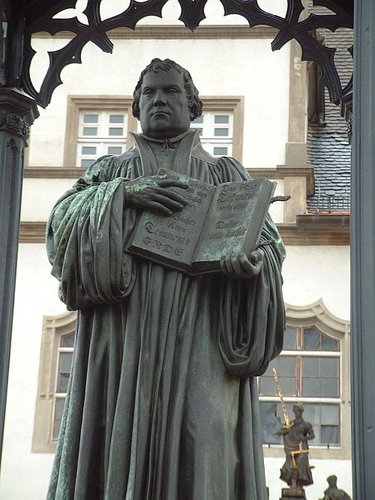
The earliest Martin Luther’s statute was raised in public in 1821 in Wittenberg, then in 1868 in Worms a lager monument of him followed. Both statues are German national works of art, and were made in the golden age of protestant historicism. After this Zwingli’s bronze statue was set up in Zürich in 1885. The Monument of Reformation, being raised to the memory of John Calvin in Geneva was only finished later, in 1917.
The memory of Calvin in Hungary
Among the Hungarian Protestants the celebrations on the 300th jubilee of Calvin’s death resulted in the life and life-work of the reformer from Geneva becoming more important to the reformed, who proudly called themselves Calvinists (which was originally used as a nickname in the 17th century).
The 300th jubilee of Calvin’s death was remembered with several ceremonies by the Hungarian reformed in 1864. During the jubilee Imre Révész’s work, who was a pastor from Debrecen, was released under the title: ‘The life of Calvin and the Calvinism.’ This was the first biography about Calvin written in Hungarian. The book was such a huge success that it was reissued in 1864. The additional release of the book in 1909 shows that it had a great impact on the Hungarian reformed in the second half of the 19th century.
Among the celebrations of the jubilee the event in Komárom stands out, which took place on the 5 June 1864. The reformed church in the town was covered by a black veil. Between the speeches, the male choir of Komárom performed, which was uncommon because the members of the choir mainly belonged to the Catholic denomination.
At Pest Pál Török, the bishop of the Danubian Reformed Church District held a service, in which he did not only commemorate the jubilee of John Calvin’s death but the 300th jubilee of the birth of the Second Helvetic Catechism and the Heidelberg Catechism as well. The head of the church district pointed out that the Swiss brothers always celebrated the reformation on the Sunday after Pentecost, because the movement returning to the truth of the Bible, which has started in 1517 was like a second Pentecost in the life of Christianity.
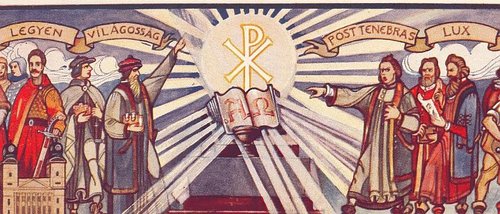
The celebrations held in Hungary and in Geneva on the occasion of 400th jubilee of John Calvin’s death were of great importance in the life of the reformed in Hungary, and the reformed from all over the world as well. Calvin’s several works have been translated into Hungarian and his portrait was placed in many Hungarian reformed schools. At the ceremonies in Geneva the Hungarian reformed took part with the biggest foreign delegation.
The statue of Luther in Budapest
On the occasion of the 400th jubilee of the reformation in 1917, a Luther-statue committee was set up, with the goal of placing the great reformer’s statue in Budapest at a public place. The money raised on this purpose has lost its value because of the high-level inflation after the First World War. The synod of the Hungarian Lutheran Church put down the question of the statue in the agenda again in the 1930s. The new deadline to meet with setting up the statue was the 400th jubilee of Martin Luther’s death, 1946. The collection had started in 1938, and a competition was conducted. In 1939 from the four invited artists Elek Lux (1884-1941), the sculptor professor of the College of Applied Arts won the competition. However the five-meter high stone statue could not be completely finished because the sculptor suddenly passed away in February, 1941.
From the end of the 1950s the finished upper part of the Luther-statue could be found in the yard of the Deák Square Lutheran congregation. In the 1980s sculptor Barna Búza was requested to finish the statue. The setting of the statue was accomplished in 1983, on the 500th jubilee of Martin Luther’s death, but it was not placed on the originally planned location in front of the church at Deák Square, instead it was put into the garden of the Lutheran Theological Academy in Zugló. Besides the many valuable publications and exhibitions, the 1983 Luther-jubilee is of great importance because on this occasion the Hungarian Catholic Conference of Bishops released a declaration acknowledging the life-work of the reformer.
Calvin memorial years
With the decision of the Synod of the Hungarian Reformed Church in 2006, the years between 2009 (the 500th jubilee of Calvin’s birth) and 2014 (the 450th anniversary of his death) are declared the Memorial Years of Calvin, and a John Calvin Committee was formed.
The Committee of the Lutheran Church in Hungary started working in 2010 with the main task of preparing the celebration for the 500th jubilee of the reformation.
Hopefully these commemorations will draw the attention on the Christ-centric theology of the reformation and the values of the reformers’ life-works.
Written by Máté Millisits; translated by Anita Polgári
originally published on reformatus.hu
Contact us
Click here if you are interested in twinning.
Reformed Church in Hungary
Address: H-1146 Budapest, Abonyi utca 21.
PO Box: 1140 Budapest 70, Pf. 5
Email: oikumene@reformatus.hu
English, German and Korean language services in Budapest
Links
Recommended articles
-
Pastoral Letter in the Light of the Pandemic
Bishop Dr. István Szabó sent a pastoral letter of encouragement to the ministers serving in RCH’s congregations, expressing his gratitude for the persistence and creativity of the pastors.
-
RCH Joins in Pope's Call for Prayer
RCH published the call on congregations to join the initiative of Pope Francis, supported by ecumenical organisations, to unite in praying the Lord’s Prayer on Wednesday, 25 March, at noon.
-
English Speaking Worship Services Online
Each Sunday at 11 AM (CET) the St. Columba's Church of Scotland in Budapest, the international community of RCH invites you to join the worpship service on its facebook page.
-
Test of Humanity and Companionship
Reformatus.hu asked Dr. György Velkey, Director General of the Bethesda Children’s Hospital of RCH about the challenges of health care workers and ways of prevention against the pandemic.
-
All Church Events Suspended
In light of the coronavirus the Presidium of RCH requested congregations to suspend all church events with immediate effect. Beside restrictions, it calls for prayer, sobriety and responsibility.







